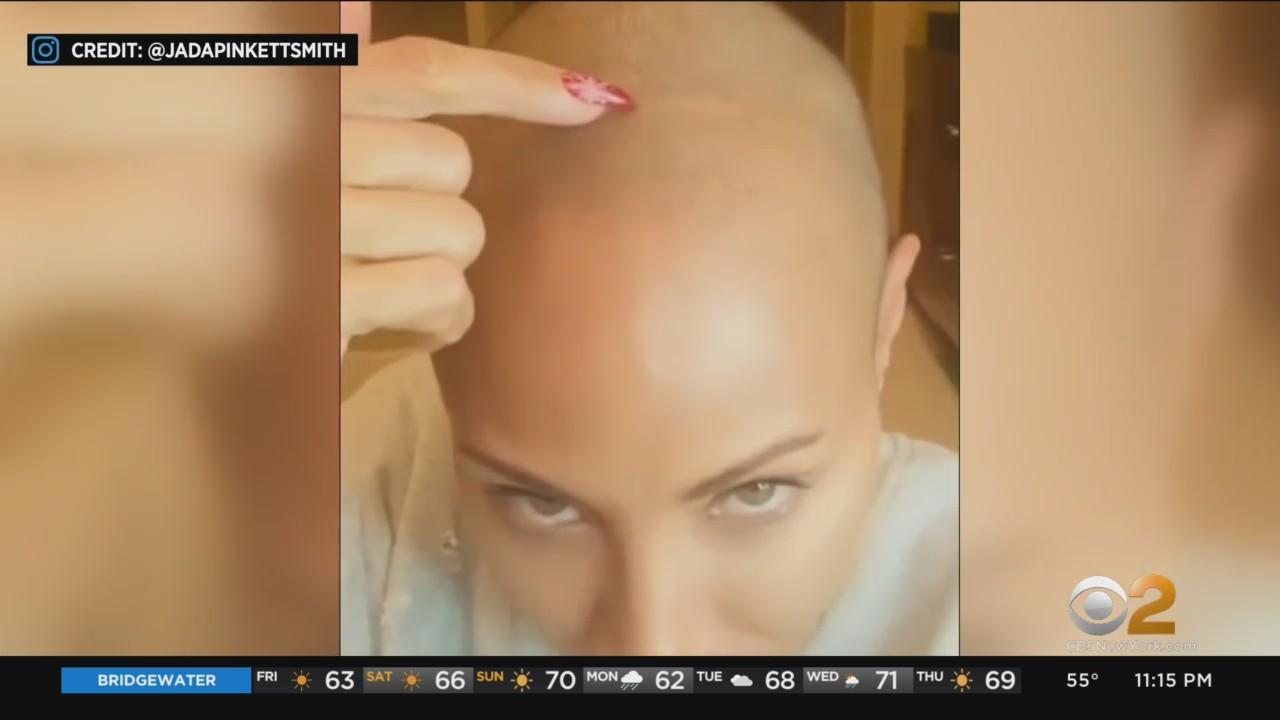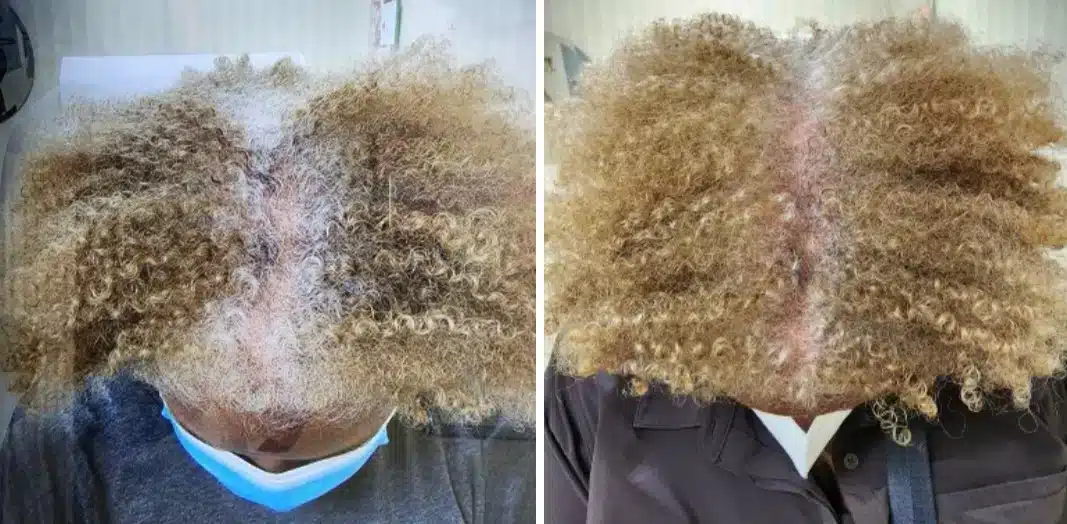Hair loss, with the medical name alopecia, can arise from many causes. These include genetics, hormonal changes, medical conditions, diet, stress, and hair care practices.
If you are seeking a hair loss dermatologist in NYC, see our team at Aglow Dermatology. We are here to provide an accurate diagnosis and tailored treatments. You can trust the expertise of board-certified dermatologist Dr. Dina Strachan to address your concerns.
Why see a dermatologist for hair loss?
Hair plays a crucial role in physical and emotional well-being. Hair is not a vital organ, but its presence—or absence—can significantly impact self-esteem. Hair loss can even signal underlying health issues.
Hair loss is an expected part of the hair growth cycle. Shedding between 50 and 100 hairs a day is completely normal. However, more than 125 hairs falling out a day might indicate hair loss. If that sounds relatable, you should visit a dermatologist for an evaluation.
Similarly, you should visit a dermatologist if:
- Your overall hair is thinning
- You find new areas of baldness
- Your part is widening
- Or your hairline is receding
Remember, significant hair loss can be an indicator of more serious health concerns. Beginning an effective hair loss treatment plan is not purely cosmetic. Seeking a dermatologist for hair loss treatment ensures that the root of your condition receives appropriate diagnosis and treatment.
About 50% of the population experiences some form of hair loss during their lifetime. Whether you’re dealing with thinning hair, bald spots, or excessive shedding, a female hair loss treatment specialist can help. At Aglow Dermatology, we’ll identify the cause and provide a custom treatment plan.
Understanding the Hair Growth Cycle
Hair growth follows a cycle which has 3 separate phases:
- Anagen Phase: The growth phase of 2-7 years.
- Catagen Phase: A transitional phase of about 2-3 weeks.
- Telogen Phase: The resting phase of about 3 months, during which old hairs shed.
Conditions like stress-related shedding and certain medical treatments can disrupt the normal growth cycle. Understanding the cycle will help you manage your hair loss.

Categories of Hair Loss
Hair loss is not one-size-fits-all. At Aglow Dermatology, we classify alopecia into two main categories:
Scarring vs. Non-Scarring Hair Loss
- Non-Scarring Alopecia: Includes androgenetic alopecia (pattern hair loss), alopecia areata, traction alopecia, trichotillomania, and telogen effluvium.
- Scarring Alopecia: Conditions like frontal fibrosing alopecia, lichen planopilaris and central centrifugal cicatricial alopecia (CCCA), which can lead to permanent hair loss.
Primary vs. Secondary Hair Loss
- Primary Hair Loss: Directly affects hair follicles, like alopecia areata.
- Secondary Hair Loss: Results from external factors like illness, diet, or medications.
Dr. Strachan, our dermatologist in NYC, will determine the type of hair loss you’re experiencing. This will help guide your treatment process.
Diagnosing Hair Loss at Aglow Dermatology
Accurate diagnosis is the beginning of effective hair loss treatment. During your consultation, Dr. Strachan will perform a thorough evaluation. This includes:
- Detailed health and family history
- Physical examination
- Blood tests
- Scalp biopsy
- Cultures for fungal or bacterial infections
Comprehensive Hair Loss Treatments in New York
Once our expert dermatologist determines the cause of your hair loss, she will recommend custom treatments. Your plan will be unique for your unique situation.
Depending on your diagnosis, treatments may include:
- Prescription medications or over-the-counter solutions (like minoxidil)
- Supplements to address nutrition deficiencies
- Injections (like corticosteroids or PRP therapy)
- Non-surgical hair restoration (like Alma TED or red light therapy)
- Laser therapy for scalp stimulation
- Surgical hair transplantation for advanced cases
Our hair loss treatment NYC solutions address all types of alopecia. We’ll help you get the personalized care and results you deserve.

Special Focus: Hair Loss in Black Women
At Aglow Dermatology, we understand the unique needs of patients with textured hair. Black women are more prone to specific conditions like CCCA and traction alopecia. This is because of hair texture and grooming practices.
Dr. Strachan specializes in hair loss treatment for African American women, offering culturally sensitive and effective care. Your hair loss specialist should be familiar with the specific needs of your hair type.
Black hair has a unique and delicate hair texture. Although hair loss affects people of all ethnic backgrounds, African Americans experience certain types of hair loss more commonly.
This is because of:
- Hair Texture: Curly and kinky hair is more fragile and prone to breakage with grooming. In addition, people with curly or kinky hair are more prone to developing ingrown hairs. Ingrowns can cause inflammation, scarring, and hair loss.
- Grooming Practices: Market research indicates that style is highly important to African American consumers. Some grooming practices for achieving certain hair styles traumatize the hair and scalp. This can result in damage and hair loss.
- Genetics: Some types of hair loss, such as central centrifugal cicatricial alopecia (CCCA), may be genetic. CCCA predominantly affects African American women. This type of hair loss is likely from a genetic predisposition to develop chronic inflammation in the scalp. This inflammation is a result of traumatic hair styling practices such as tight braids, tight weaves, or heavy dreadlocks.

Hair Loss and Diet: The Connection
Nutritional deficiencies, such as low levels of protein, iron, zinc, or biotin, can contribute to hair loss. Not everyone benefits from supplements but targeted nutritional support may be part of your recovery plan. Our team will guide you in optimizing your diet to support healthy hair growth.
Preparing for Your Hair Loss Consultation
Before visiting our NYC office, please prepare for evaluation by wearing your hair loose. Avoid braids, weaves, or wigs to allow a full hair and scalp examination. This helps us evaluate your condition thoroughly.
Contact Aglow Dermatology: Your Trusted NYC Hair Loss Specialist
If you’re experiencing hair thinning, bald patches, or excessive shedding, you’re not alone; we can help. Schedule a consultation with our hair loss dermatologist in NYC today. Call us at 212-627-1004 or fill out the contact form on our website.
Explore More: Hair Loss Videos and Resources
If you’re interested in learning more, visit our YouTube channel for expert advice on hair care and alopecia. Discover in-depth discussions and tips for managing hair loss effectively.
- Do You Comb Curly Hair?
- What is CCCA Alopecia?
- How Often Should I Grease My Scalp?
- Can Eczema Cause Hair Loss?
- How Often Should I Condition My Hair?
- How do I Treat Damaged and Dry Hair?
- Does My Hair Color Affect My Hair Loss?
- Do Pony Tails Cause Hair Loss?
- What are the Different Catagories of Hair Loss?
- Scalp Biopsy for Hair Loss, What is Involved?
- Punch Biopsy of Skin
- Does Zinc Affect My Hair Loss?
- Do Firbroids Cause Hair Loss?
- Why Do We Have Nose Hair?
- What Causes Eyebrow Thinning?
- Does Pregnancy Effect Hair Loss?
- Is My Hair Loss a SIgn of Something More Serious?
- What Causes Dry Scalp? Does It Cause Hair Loss?
- Does Wearing a Baseball Hat Cause Hair Loss?
- If I Stop Using Rogaine Will My Hair Fall Out?
- How Often Do I Have to Wash My Hair?
- Hair Loss is not a Joke
- Hair Discrimination and Hair Loss
- Dermatology Hair Loss Specialist Dr. Strachan on Hair Loss and Race
- What are the Causes of Hair Loss: Understanding Alopecia from A Board Certified Dermatologist

